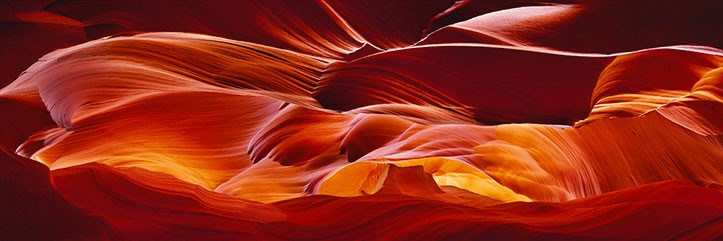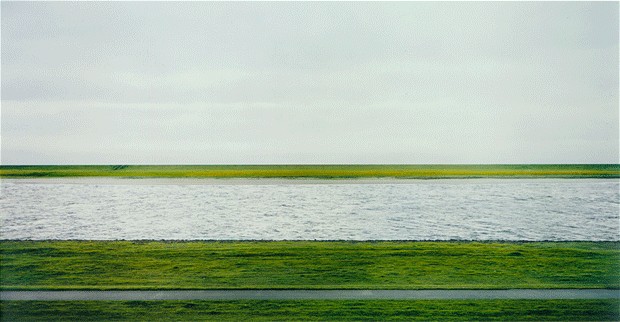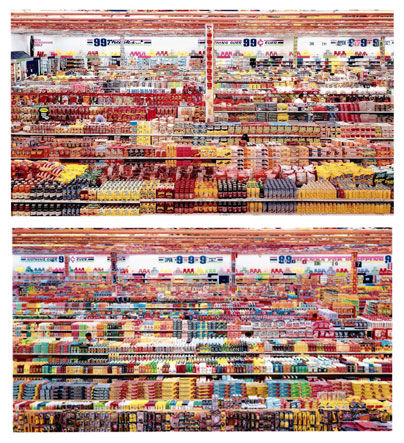We all know the saying ” a picture is worth a thousand words” and that may be true. Photographs can convey a sense of time, place, emotion and insight into the scene in the image. As a fine art landscape photographer, I often ask myself, what is a photograph worth? The answer is, as it often is, “that depends”. I know, vague , right? I also hear photographers discussing at length what they should charge a client to use one of their images, questions like…what should they charge for usage? royalties? type of usage? and so on. As a landscape photographer, this debate is not as complex as the world of stock photography, but it is complicated. So the question remains, what is a photograph worth?
A few mornings ago, I was sitting in one of my favourite coffee shops in Vancouver and of of my friends sitting there said he had recently been to Las Vegas and visited one of Peter Lik’s galleries there. He spent a few hours looking through the images and decided to buy two prints which he loved. He then said something very interesting. He said that he paid a LOT of money for these two prints (Crimson Tides and Tranquil Blue ) and that he wasn’t sure if the money spent was an investment, but that HE loved the images. This started a whole discussion about value and what do we see as valuable. I will tell you more about this later, but first I want to move away from the coffee shop chat and talk about selling images.

1. Why do photographers was to sell images?
I have asked myself this question for a long time. I am not sure I know the answer, each photographer will have a different reason for selling their images, so let me tell you what mine are. I feel that I like to sell my images because there is something about showing people visually, the beauty I saw in the scene. I want to share that with the viewer and to sell the image to someone means that they think my images is worth something…to them at least. It validates, in some way, what I do as a photographer. It means that the work that I have created has value to someone other than me. Would it be the same if I gave my images away? For me, the money simply is a means in which to perform the transaction, there are costs involved in printing and framing images, but if someone likes my images and I gave it to them, I think I would feel just as excited. I enjoy the fact that people like what they see in my images, its really that simple. I like to share that gift with anyone who will look at the images.
2. Why are some images more expensive than others?
This is a fascinating question. One that I think about often and I am not sure what the answer is, but here are some thoughts. I think that some PHOTOGRAPHERS can command a higher price for their images because of who they are. I think of photographers like Ansel Adams, Art Wolfe, Joe McNally, Frans Lanting, Ed Burtynsky and Freeman Patterson. Their images are iconic and their name in the photographic world precedes them. They have a tremendous body of work spanning many years of photography in some exceptional places and all of them have captured “once in a lifetime” images. Their visits to these places have significant stories attached to them and this all builds into the cachet of the images they sell. They have built up a reputation and are admired by other significant photographers and so their images have an intrinsic value because of the actual image, but they have more ethereal value because the image was made by one of these photographers. The image becomes a masterpiece, not necessarily because it is simply a great image, but because it was created by a great photographer. This is true in classical art. An original painting down by one of the masters is infinitely more valuable than a great copy of that same painting. The touch of the master on the image is the intangible and probably, most powerful element of selling images.
Now, you could do a search on each of these photographers and see their work and you will be astounded at the quality, craft and beauty of their work. It is undeniable. As a result, you might think that the most expensive photographs ever sold, would be by one of these photographers, that would be logical. The interesting thing is that of all the most expensive photographs sold in the world, only one of the the photographers I mentioned earlier, appears on the list of most expensive photographs ever sold.
Why?
Well, I am really not sure why. I look at the images in these portfolios and they are amazing. The technical side of the images is flawless, the passion is evident, the beauty is surreal, but they are not the ones who have sold the most expensive prints.
The most expensive print ever sold was a print by Andreas Gursky called Rhein II and it sold for $ 4.3 million in 1999. Thats right, one print, 4.3 million dollars. Wow, just think about that for a minute. Think of what that type of image would look like. It would surely be spectacular, it would have to be right? It must have been something very unique…these are the things that I thought when I first heard that. I then noticed that Mr Gursky has also sold the fourth most expensive print ever, for $ 3.3 million, WOW! So I had to take a look at the images that have made over $ 7 million dollars for the photographer. I was astounded, but take a look for yourself, they are below:


I don’t want to fall into the trap of being a bitter critic, but I was not astounded in a good way when I saw these images. Yes, they are amazing images technically, yes they offer a unique view of what may be banal subjects…but what caused the value of these images to soared way over the million dollar mark?
I have no definitive answer, but lets go back to the coffee shop in Vancouver for some insight. When I asked this friend of mine what he liked about the images he bought he explained what they meant to him. He spoke about the emotions he felt when he looked at them and what joy they brought him each time he saw them. He loved the colours, he loved the light, but most importantly, he loved the way they made him feel. For that reason, he was willing to spend thousands of dollars on two images for his home. Yes, the Peter Lik images are good from a technical aspect. Peter Lik chooses his subject matter very carefully and then makes a very dramatic image of the scene. His images are very rich in colour and they are impeccably edited. So yes, there is a lot of value in the image from that perspective. The images are large, they are 6ft across by 3ft down, framed and matted, it is an imposing image. They are beautiful. So my question here is, value wise, are they worth what they cost. My friend said that he was not sure if they were an investment, but he bought them anyway. Why? HE saw the value in how the images made him feel and he wanted that experience every day. He wanted that feeling in his home, when he woke up and when he was sitting in his living room. He felt that the value he would get out of those images far exceeded the amount of money he paid for them.
Philosophically speaking, we make these tradeoffs every day. Its in the car we drive, the computer we use, the mobile phone we have, the shoes we wear and the pen we use. Value is not something that can be easily defined, but someone once said this to me. Its difficult to define value, but you will know it when you see it. When my friend bought these images, he wasn’t equating the image to the amount he paid (which was a tangible amount) but rather he was equating it to the lifetime value of the experience of those images. He showed me the images in his apartment and he was visibly excited to show them. He wasn’t trying to show off, or be pompous. He was giving me an insight into his life, by showing me what he values in his life and his world. It was an interesting experience to look at the images on the wall as a photographer. I could see all the technical details that Peter Lik had made decisions on to get that image. I could see the editing process and how well the image had been developed. I saw the work in printing it properly and mounting it on a board and framing it beautifully. I then looked at the image as a person who loves great images and nature scenes. I saw something totally different. I saw the image as something that is inspiring, exciting, comforting. It could be aspirational, but mostly the value of the image is intangible.
So what does this all mean?
I learnt a few things in a short time on that morning, let me summarise them for you. If you currently sell your images or want to sell them, these ramblings could be useful…not sure, but maybe.
1. Photograph what you love. Don’t photograph for a potential sale, photograph your favourite scenes. When you do, your passion and art will be evident in the image and that will cause people to buy it.
2. Be a master craftsman in everything you do. Quality is key, over deliver on this. Give insights as to how you shot the image, give a poetic write up about the scene, give your audience as much information as possible about the image
3. Be pedantic about every step in the process. Make sure you capture the image properly in camera, edit it as best as you can. Print it, mount it and frame on the best materials you can afford, treat is as the work of art it is.
4. On your website, be approachable. You are not simply selling photos, you are giving visual impact to someones dream. Your image may be a place they long to visit. It may be a place they have visited and have great memories from that time. Speak to people, get excited with them in your email correspondence, be professional and friendly. They may want to buy another image at some point, give them a reason to come back and tell others how great it was to meet the artist!
Who knows how much the next most expensive photograph ever sold will sell for. To be honest, it doesn’t matter. My goal in selling fine art photography is not to get rich quick. This will be a long term investment of time and craft. I am happy to do that, if it means I get to see someones face light up when they look at my images and even better, if they want to buy one or two. The goal for me is to help people see places they long to go to or to give them a reason to go, by looking at my images.

Great article Barry, very uplifting and motivating. Thank you for sharing.
Value. Can only be measured if the price of the object will be resold and it maintains or increases in value.
But personal value is only a concern to the individual purchasing the item. If you are think of selling the item then you’re concerned with monetary value. But if it’s strictly for personal satisfaction then the value is derived from the satisfaction you get from the item.
I think personal satisfaction has a much higher value than monetary value. You can but a value on personal satisfaction but others can. So which is more important? I say happiness far outweighs monetary value. But we are all different and the question can not be answered for some one else. Your friend will get far more out of it if they bought it with disposable cash and did not go into debt for their purchase. Be Happy.
Thanks James, some great thoughts here. I agree that personal value is more important, I think we base most of our buying decisions on that anyway. You are right about being happy, this is the most important ingredient…thanks for the comment!